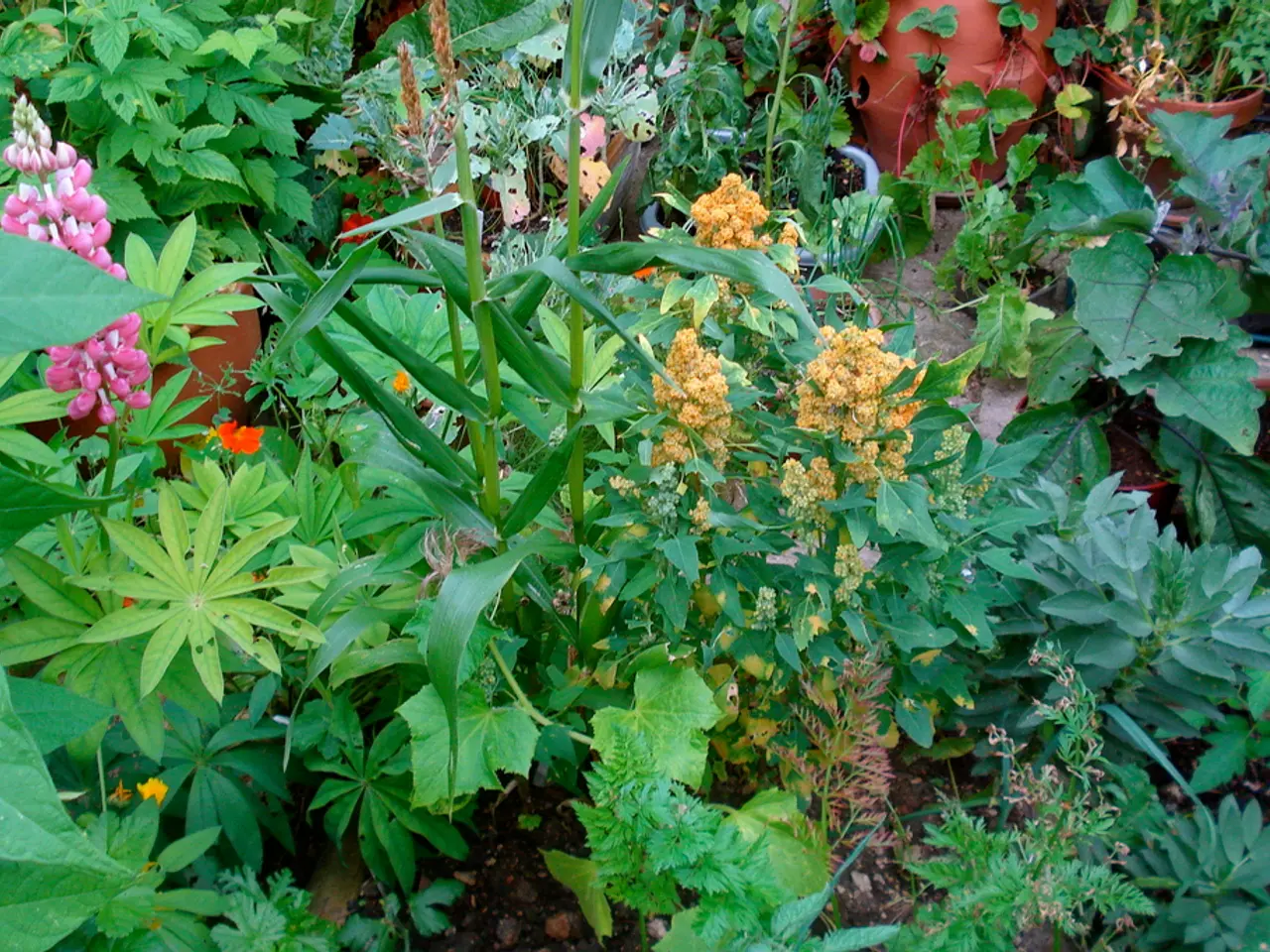Experts Explain the Concept of Jealousy to Reporters
Rhubarb, a common plant found in the gardens of Khabarovsk dacha owners, has a rich history and a variety of health benefits. Originating from Asia, particularly Tibet and western China, this plant has been cultivated for centuries for its medicinal properties.
Historically, rhubarb was used primarily as a natural laxative and for digestive health. Its sennosides content acts as a natural laxative, stimulating bowel movements, while its tannins confer antidiarrheal effects. The high fiber content in rhubarb further supports digestive health by promoting regularity.
Beyond its digestive benefits, rhubarb is nutritionally rich in vitamins K, C, and A, calcium, dietary fiber, and antioxidants. These nutrients contribute to several health benefits, including improved wound healing, bone health, and alleviation of menopause symptoms.
Rhubarb's vitamin K content is particularly important for normal blood clotting and wound healing. This vitamin also aids in bone metabolism and formation, helping prevent osteoporosis and lowering the risk of fractures. Additionally, rhubarb's antioxidants, such as vitamin C and emodin, support skin repair and protect against oxidative damage.
In the context of menopause, rhubarb has been reported to help reduce hot flashes and may have anti-inflammatory effects that soothe brain inflammation, which can be beneficial during menopause-related neurological symptoms.
Rhubarb's popularity increased due to its ease of growth and low demands. It became known in Europe as a powder and later as stalks with a sour taste, used in cooking. Its use in Europe expanded beyond medicine, and it was employed in various culinary applications.
Rhubarb is also beneficial for those on a diet, as it contains catechins that are known to activate metabolism. Furthermore, products containing fiber, such as rhubarb, help lower cholesterol and maintain its level. High cholesterol is a risk factor for developing conditions such as strokes and heart attacks.
It is important to note that only the stalks of rhubarb are safe to consume, as the leaves contain high levels of oxalic acid and should never be ingested.
In conclusion, rhubarb has a long history of use for digestive health, and its nutritional profile supports bone strength, skin health, and menopausal relief, with emerging evidence suggesting broader health applications such as antimicrobial effects. Today, rhubarb continues to be grown in gardens worldwide, offering a versatile plant with numerous health benefits.
References:
- Nutrition and You. (n.d.). Rhubarb. Retrieved from https://www.nutrition-and-you.com/rhubarb.html
- Vitamin K. (2018, November 28). In StatPearls [Internet]. StatPearls Publishing. Retrieved from https://www.ncbi.nlm.nih.gov/books/NBK470306/
- University of Rochester Medical Center. (2021, January 1). Vitamin K. Retrieved from https://www.urmc.rochester.edu/encyclopedia/content.aspx?ContentTypeID=90&ContentID=P01160
- National Institutes of Health. (2020, October 15). Rhubarb. Retrieved from https://ods.od.nih.gov/factsheets/Rhubarb-HealthProfessional/
- National Center for Biotechnology Information. (2018, November 15). Emodin: A Review of Its Antitumor Activities and Mechanisms. Retrieved from https://www.ncbi.nlm.nih.gov/pmc/articles/PMC6225877/
The versatile plant, rhubarb, not only offers medicinal properties for digestive health due to its sennosides and tannins, but it also contributes to a health-and-wellness lifestyle with its rich vitamin K, C, and A, calcium, dietary fiber, and antioxidants. This nutrient-dense plant supports bone health, skin repair, and may alleviate menopause symptoms, making it a valuable addition to healthy diets and science-based nutrition.




